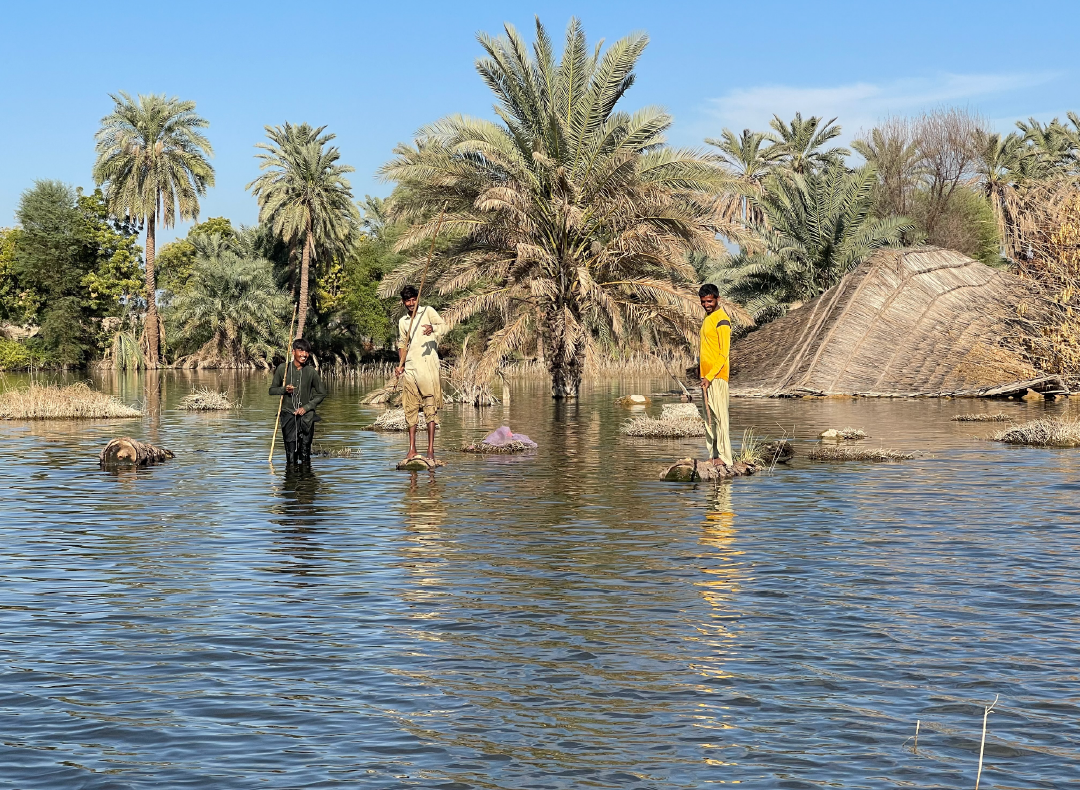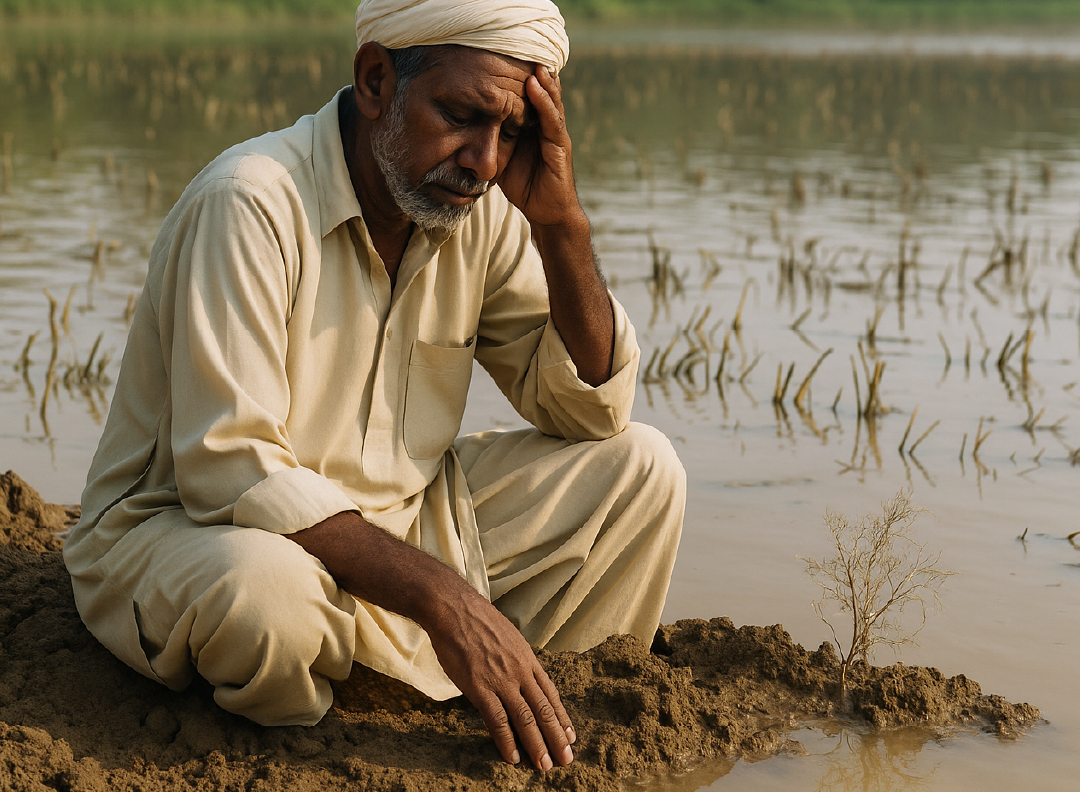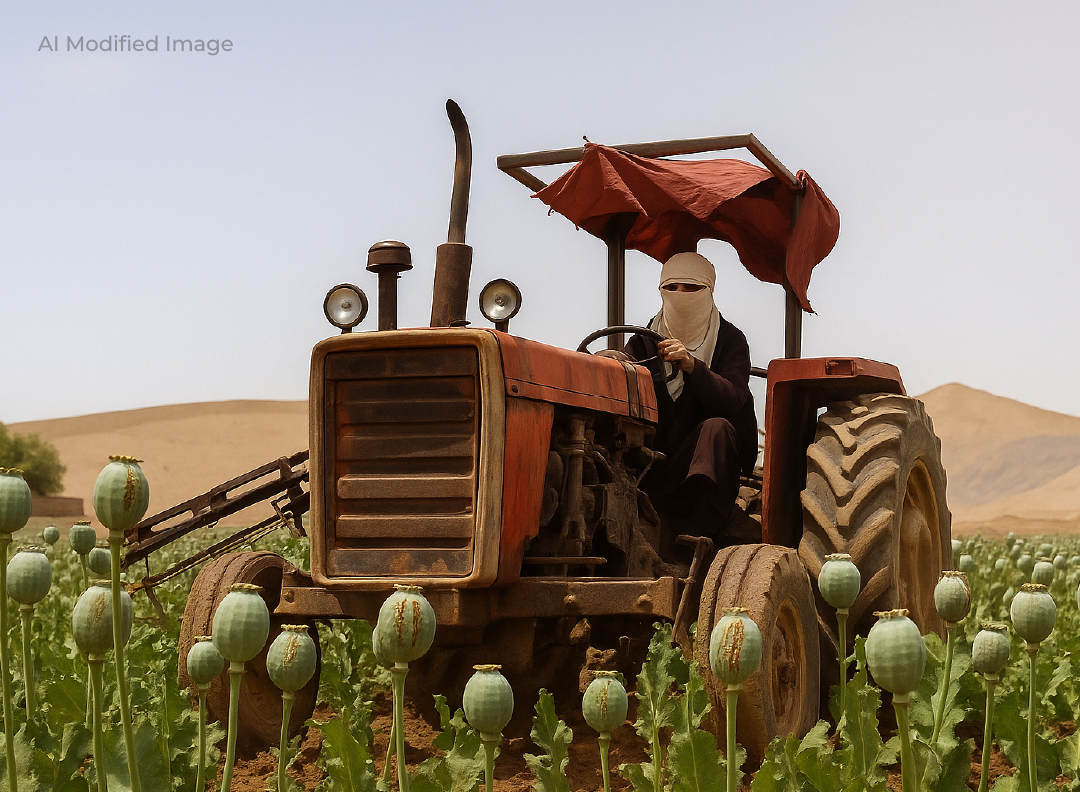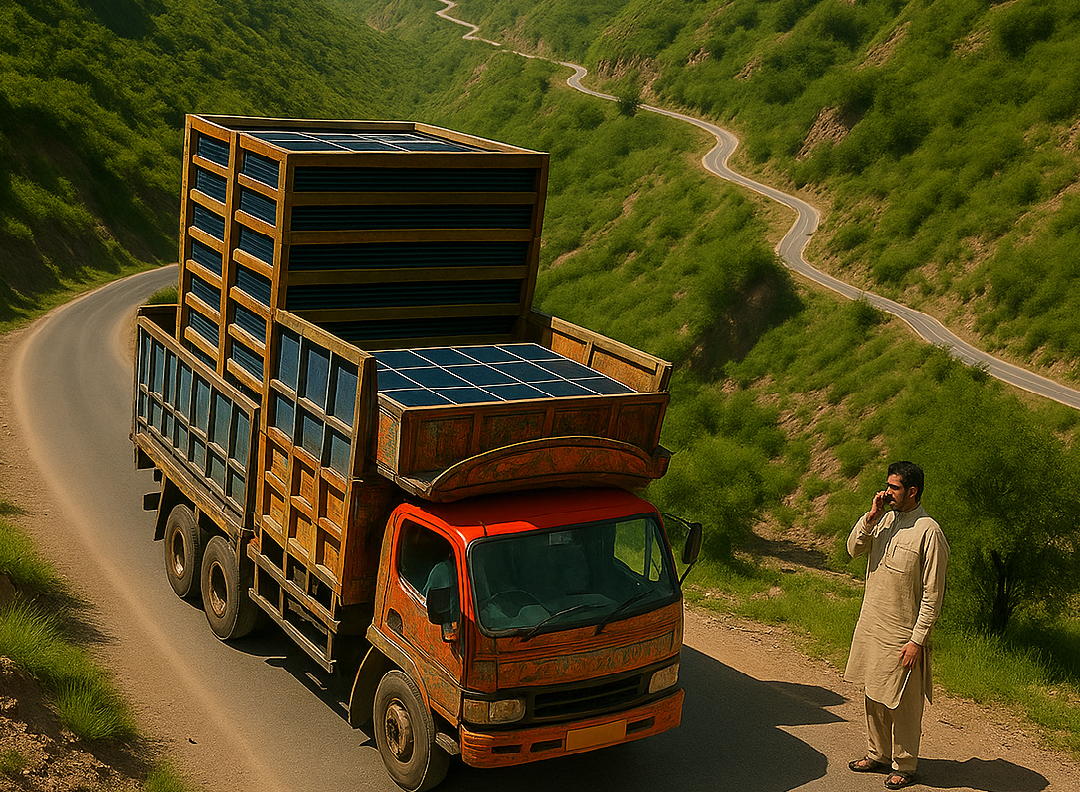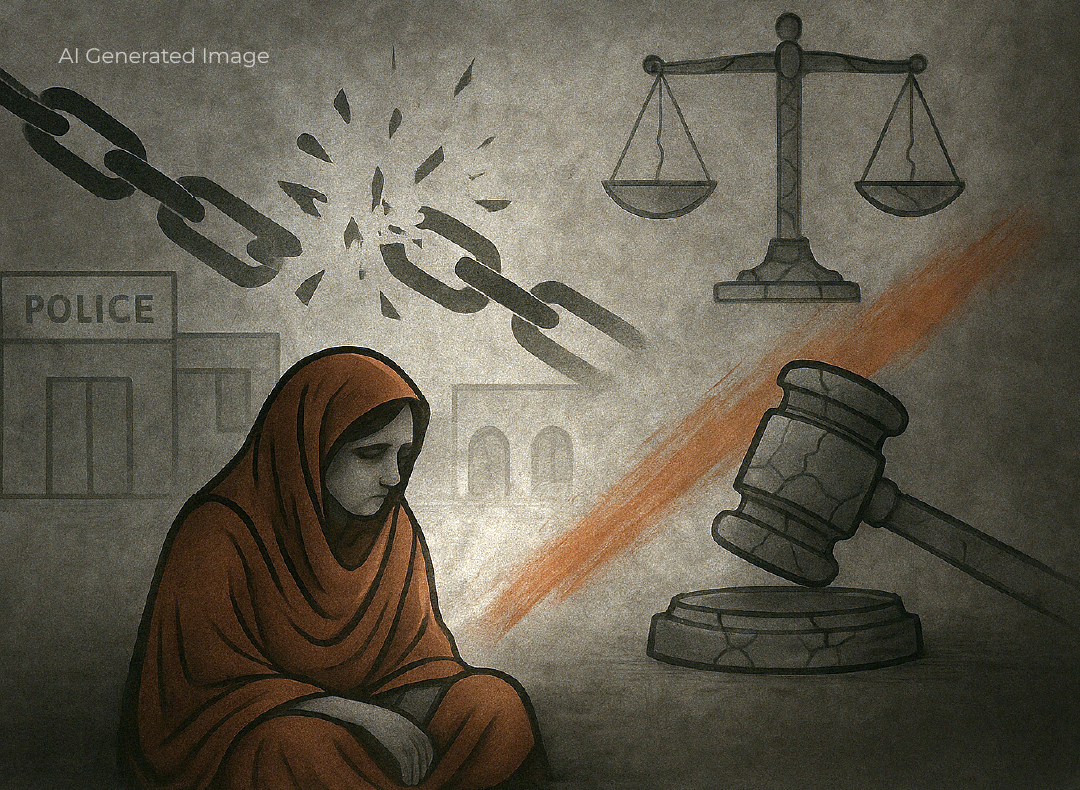Renowned Pakistani singer Quratulain Baloch was injured in an attack by a Himalayan brown bear in Gilgit-Baltistan on September 4. The incident took place in a temporary camp in Deosai (Astore district) where she was sleeping. She had to be shifted to Skardu overnight for medical treatment.
Quratulain had gone there with an international organisation to participate in relief operations during the floods. She has also participated in such works as a volunteer in the past.
Some people believe that the brown bear might have been provoked by someone or that something was cooked in the camp and it had reached there following the smell; however, Todd Shea, the founding director of the organisation, described these things as assumptions that have nothing to do with reality.
According to experts, bears also run away from humans and this was the first incident of an attack on a human in Deosai. Lok Sujag during its investigation into the attack has found that some people in Deosai feed brown bears and other animals with items like biscuits, roti or leftover food, due to which the bears have now started looking for food near the human activity. This has increased the risks not only for tourists but also for the brown bear, whose species was close to extinction in Pakistan three decades ago.
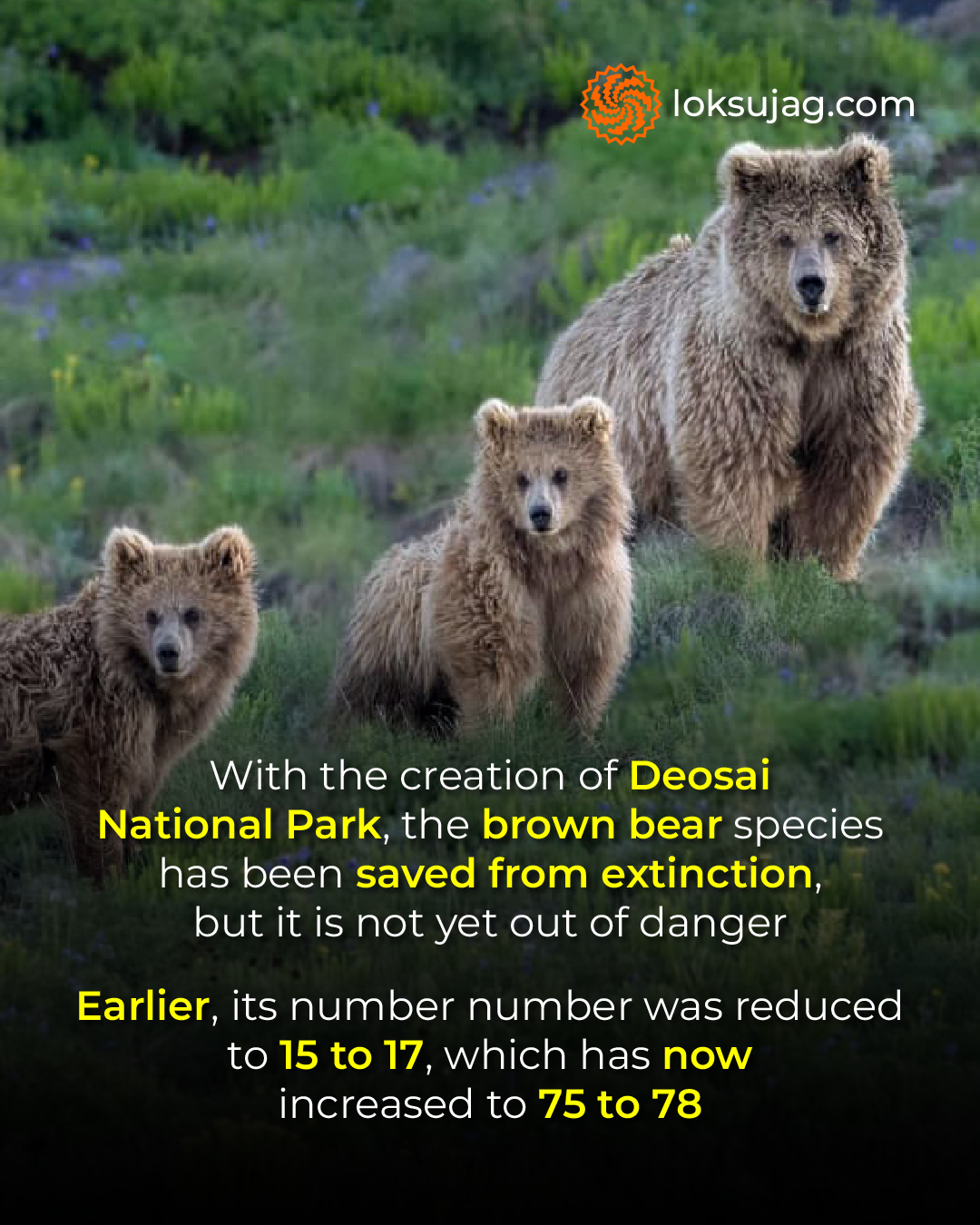
What’s behind the cut in brown bears’ number?
Deosai, also known as ‘the Land of Giants’, is a plateau at an average altitude of 13,500 feet. This is a major habitat for brown bears in Pakistan but why has their population decreased here? There are several reasons for the cut in numbers. Various parts of the brown bear have been used for centuries in Chinese and other traditional medical systems for human treatment. Its bile or yellow water is considered a cure for liver, eye diseases, hemorrhoids and stones, while the fat is used as a salve for skin diseases and joint pain.
In many parts of Pakistan, they have also been used in cruel sports such as bear-dog fights. Although this trend has now decreased, sporadic incidents are still reported. Bear cubs were captured for fighting and raised and trained by people of a specific community. Sometimes, to obtain a cub, the female bear was killed, whose reproduction is already slow because it gives birth after four or five years. In addition, local people also consider bears to be a threat to their livestock and often kill them if they are found nearby. In view of this situation, the government declared Deosai a national park in 1993 to protect wildlife, especially brown bears.
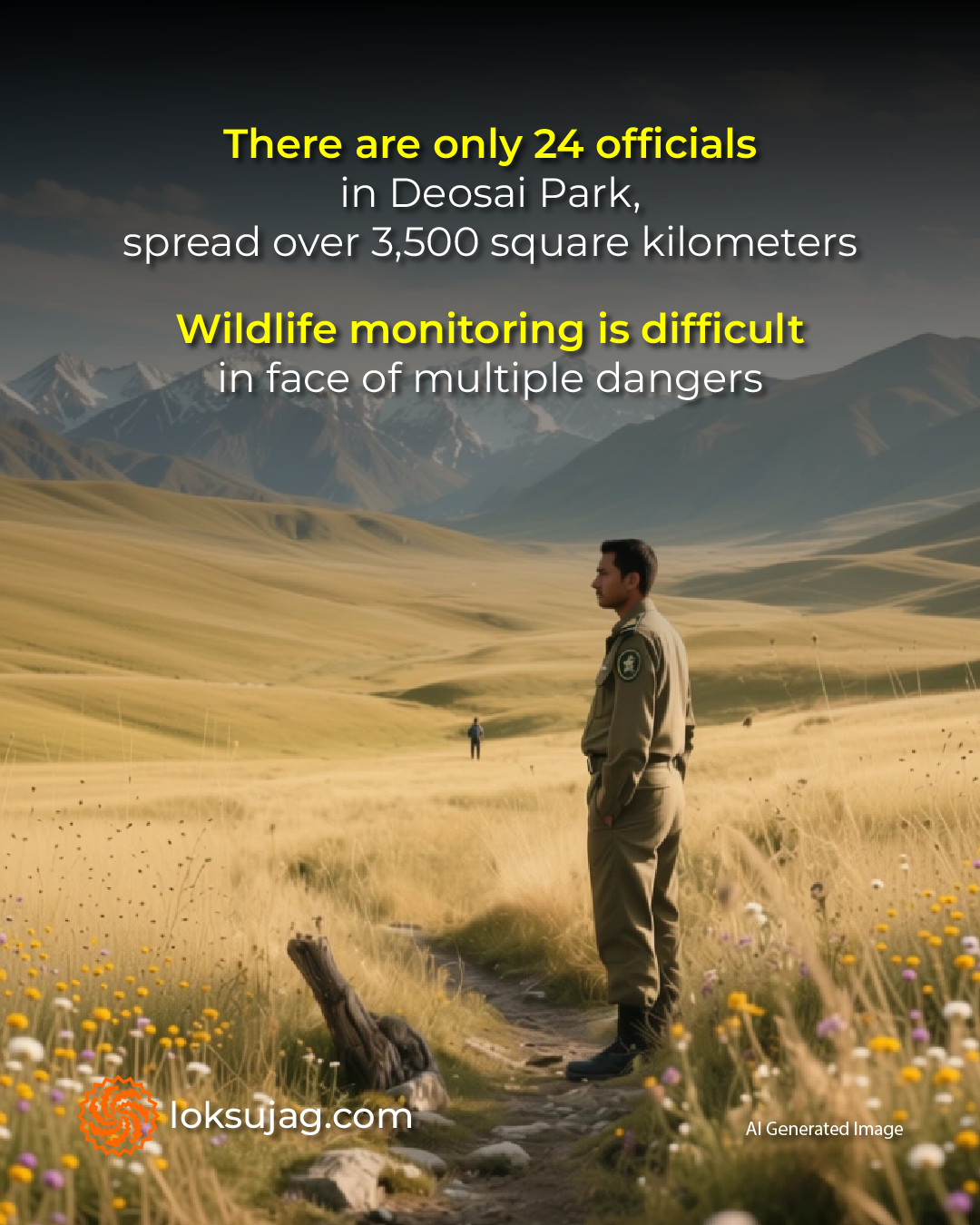
The bear organ theft: Is the mafia active?
The creation of Deosai as a National Park has proven to be good for the brown bear. According to Muhammad Sajjad, district forest officer of the National Park, in 1993 there were only 15 to 17 brown bears left here, but now this number has reached 75 to 78. However, even after 32 years, their species has not come out of danger and the nature of these dangers has not changed completely.
Twenty-two days after the attack on Quratulain Baloch (on September 27), a brown bear was found dead in the pasture of Deosai, and doctors performed a post-mortem on it on September 28. According to the postmortem report, the male bear was blind in his right eye (it had no eye at all) and had become weak and emaciated due to a chronic liver disease.
However, it died after being trampled by a herd of animals. Although no evidence of human involvement was found in the death, the post-mortem revealed that the brown bear’s tongue and reproductive organs were stolen after its death, a case of which has been registered against unidentified persons.
This incident shows that there are still people involved in the black market of wild animal parts or those who want to do so. However, Faizan Dakhi, a wildlife officer posted in Gilgit, claims that anyone who has committed poaching in GB has been sent to jail.
“Complaints related to brown bears are very few. Even if there is a rare incident, we always take action once the accused is identified.”
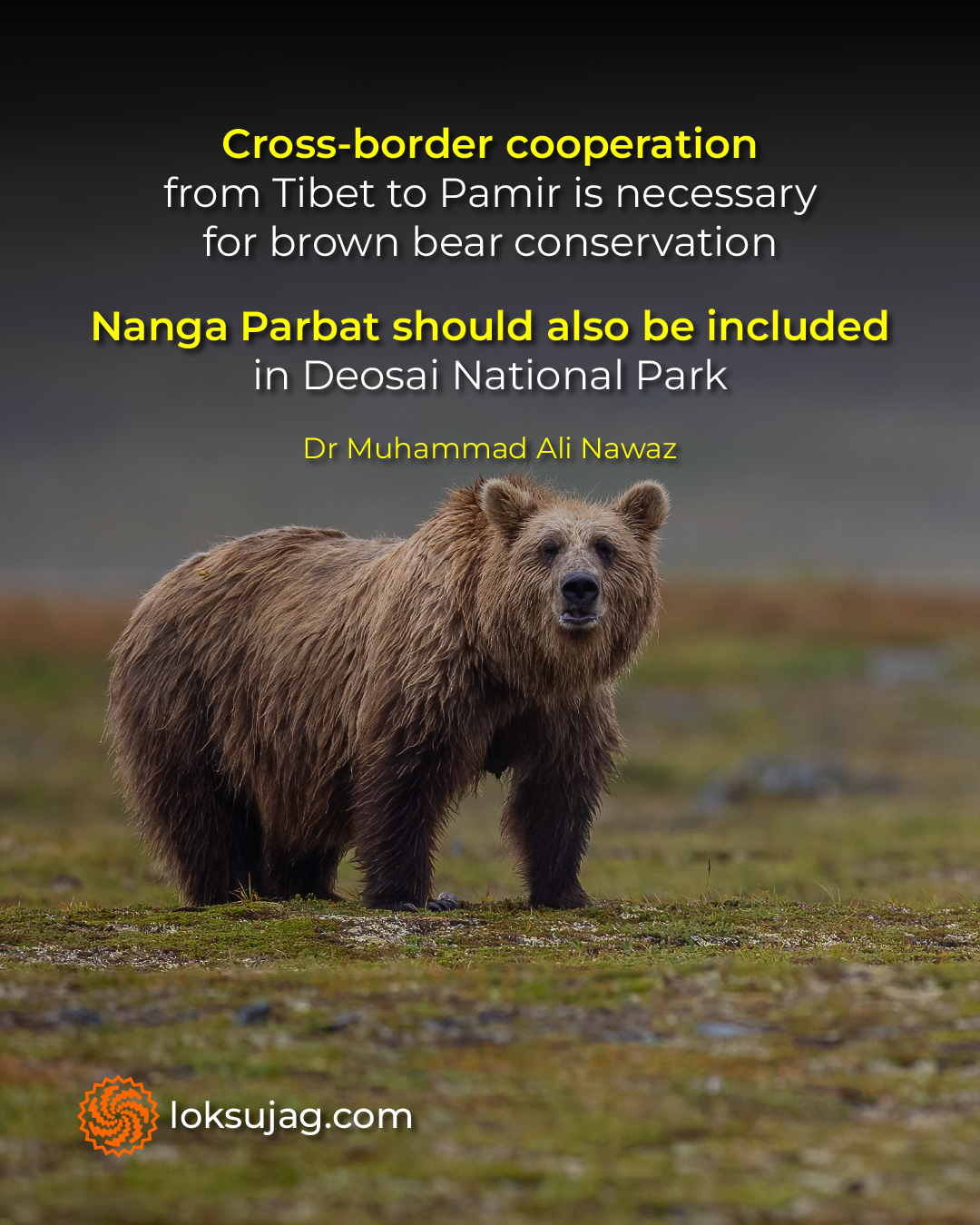
Old laws, low penalties and lucrative black market
Dr Muhammad Kabir, a researcher at the University of Haripur, has been working on the wildlife of Deosai. He says that illegal wildlife trade involves people from locals to international smugglers. Weak monitoring, limited resources, lack of communication among institutions and corruption all make this work easier.
A wildlife department official, speaking on condition of anonymity, says that there are only 24 employees to monitor the National Park, while at least 40 are required.
According to the department, in the past year, in addition to the killing of a brown bear (mentioned above), a black bear, two markhors, three ibexes and the capture of a snow leopard cub were reported in different areas of Gilgit-Baltistan.
A black bear was killed in Tangir Valley (Tangir district) and a video of it being thrown off a hill was uploaded on social media in July. A case was registered against the person seen in the video, but he has not been arrested yet, due to which the case has not progressed.
Experts believe that registering cases is not enough to eradicate these crimes. Dr Kabir believes that wildlife laws are also outdated. He gave the example that the maximum fine imposed for killing a brown bear till date is Rs300,000, the penalty for catching a live bear is even less, while the same bear is sold for many times more in the black market. These punishments cannot prove effective in preventing crime.

The issue of legal loophole
Dr Muhammad Kabir also mentions another legal dilemma, that people illegally hunt wild animals even by taking the help of the law of self-defense.
“This ambiguity has to be removed. Several new standards operating procedures (SOPs) have come up in the world for the protection of wildlife, which can be adopted.”
He says that in the light of new realities like climate change and settlement, these laws have to be reviewed and local communities have to be included in the implementation of policies.
Wildlife already feels threatened by the shrinking of its natural habitat, now the sudden drop in temperature and changing snowfall seasons are having further negative effects on the breeding, migration and hibernation (long winter sleep) of brown bears. These factors increase the tension between humans and wildlife.
Dr Kabir believes that if the protection of the livestock of the local community or compensation for their death is ensured in Deosai, then the justification for killing wild animals will disappear. This problem can be solved by introducing a fence around the national park and a cattle insurance scheme. This will also reduce the pressure on the staff responsible for monitoring the park.
“As far as feeding wild animals human food, cooking food or leaving leftover food in the park area is concerned, you should improve the training and monitoring system of tourists. Sustainable tourism and wildlife conservation have to go hand in hand.”
Effective implementation of laws is another issue. The government had banned camping in Deosai after the attack on Quratulain, but the next day people were there in tents, including families.
Also read this

When seasons rage and habitats melt: Can the latest snow leopard count help secure its survival?
Regional cooperation essential for wildlife conservation
Dr Muhammad Ali Nawaz, a researcher on Himalayan brown bears, says that these wild animals used to roam freely in a mountainous area of 150,000 square kilometers. In the last 50 years, the increase in human population, infrastructure, livestock farming and unregulated tourism have narrowed their habitat, which is the main cause of conflict between humans and wildlife.
The Deosai National Park is spread over 986,000 acres (3,584 sq km) of Astore and Skardu districts to the east of Nanga Parbat. It is the region where two major ecological regions, the Himalayas and the Karakoram/Pamir mountain ranges, meet. In addition to the Sheosar Lake, these high pastures, rocky terrain and plains are fed by three rivers, the Shatang, Bada Pani and Kala Pani. Their confluence forms the Shigar River, which is an important tributary of the Indus River.
This environment is very conducive to the breeding of hunting and prey animals. Deosai is a sanctuary for many wild animals, including the Himalayan brown bear, Tibetan wolf, ibex, Tibetan red fox, Ladakhi Ural (sheep) and golden marmot. Most of these animals migrate to and from the Karakoram, Himalayan and Ladakh mountains via the Indus River valley. In winter, Deosai is covered with snow and in summer, when the snow melts, the rivers flow faster.
Not only do the trout breed here, but these waters also host 124 native and migratory birds, including the griffon vulture, golden eagle, loggerhead and peregrine falcon. In spring, this plateau is covered with willow, grass, saxifraga and other species of herbs. The entire area is filled with flowers, fragrance and rare butterflies. These plants and rivers provide abundant food for wildlife.
The Himalayan brown bear is also found in Nepal, India, China and Afghanistan. Dr Muhammad Ali Nawaz suggests that cross-border cooperation (Pakistan, India, China, Afghanistan) from Tibet to the Pamir mountains should be increased to protect the bear's natural routes. The Nanga Parbat area should be included in the Deosai National Park, which could provide a new habitat for the snow leopard and other animals.
Published on 17 Nov 2025




